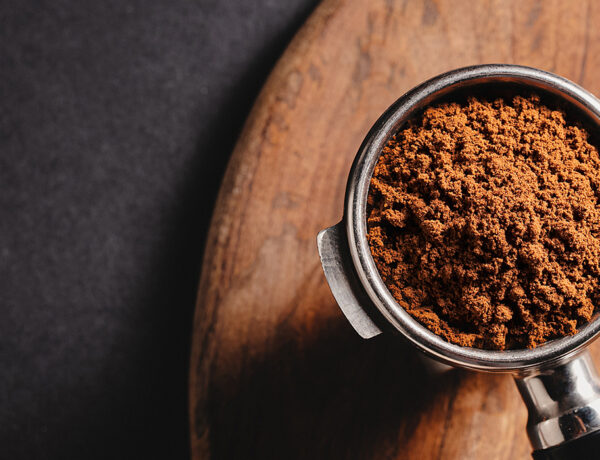
Coffee grind: choosing the right grind for your coffee maker!
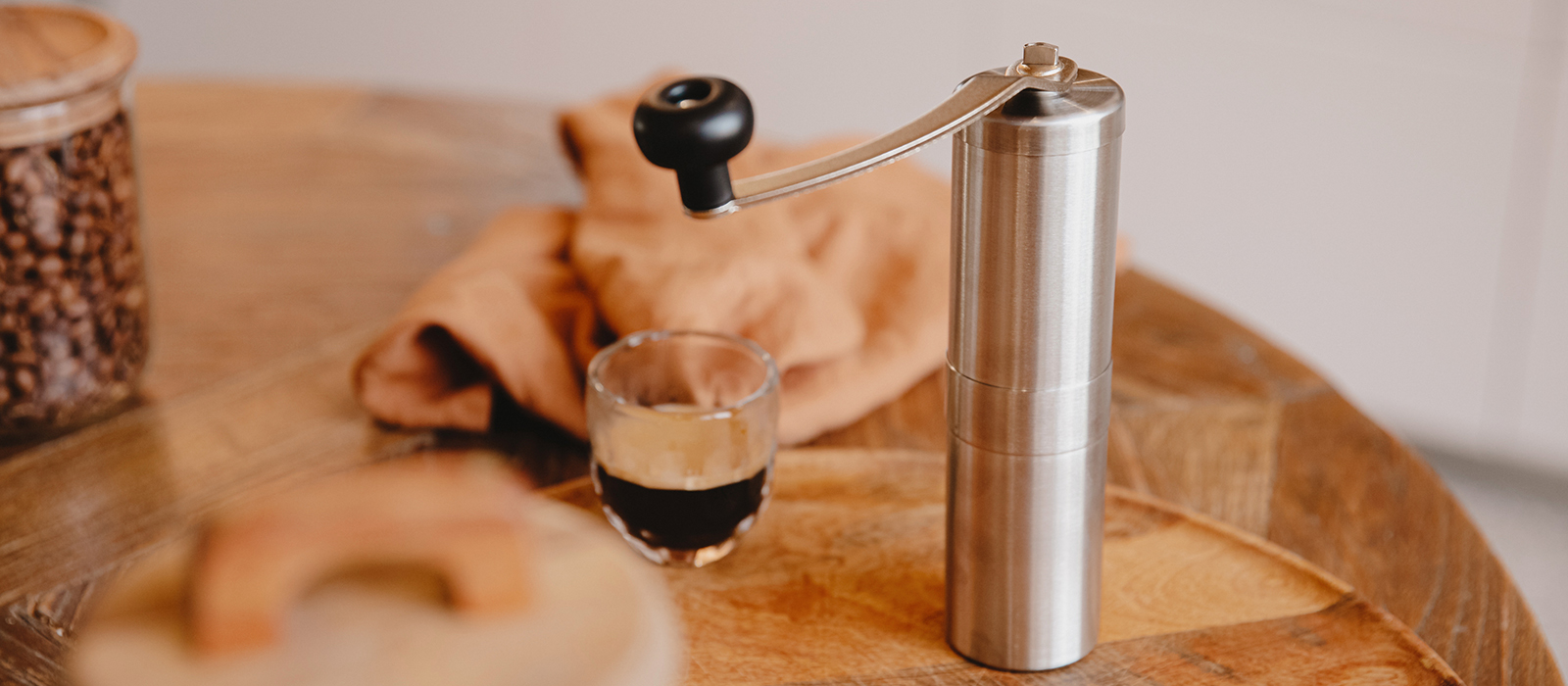
Written by Jordan
Reading time 8 minIn this article, we’ll be sharing all you need to know about coffee grinders, whether you’re a coffee amateur or a seasoned brewer. We’ll take you through some key things you need to know and offer our top picks at the end so you can make that perfect morning cup! Let’s get into it!
If you want delicious and flavoursome coffee, using a grinder is a must for a number of reasons.
First, it will allow you to use freshly ground beans instead of pre-ground coffee which loses its flavour and aroma faster due to oxidation. And remember: freshness is key to making a good pot of coffee!
What’s more, different brewing methods require their own specific grind size. Whether you’re using a manual espresso machine, a cafetiere or a moka pot, you’ll need to choose carefully if you want to get the most out of your coffee beans.
Not only does the type of coffee machine you’re using dictate grind sizes but your likes and dislikes also play a part. For instance, fine grind tastes bolder and more robust while coarse grind is milder and more delicate. So having control over grind size will help you experiment and end up with a result in cup that matches your taste.
Ultimately, a coffee grinder allows you to customise your coffee experience and maximise the flavour, aroma, and freshness of your beans.
Manual grinders, also called hand grinders, have numerous advantages over their electric counterparts.
Due to their small sizes, these types of grinders are easy to transport. They don’t need electricity and can come with you wherever you go, meaning you can grind your coffee while camping, travelling, or when you’re on the go.
Unlike electric grinders, they are quiet, which is great in the morning if you don’t want to wake up the whole family. They are not as fast as electric grinders and require a bit of elbow grease, but it’s all worth it if you don’t like noisy appliances!
Manual grinders do have smaller capacities however. They work well for 20g, up to a max of 60g. If you need more per dose, you may be using the wrong product, so you may need to opt for an electric grinder instead. Remember, you’ll need 20g of coffee for an espresso and 25 to 40g for filter coffee.
There are several criteria to take into account before purchasing your manual coffee grinder. At MaxiCoffee, we offer a variety of manual grinders to suit your needs. In this section, we’ll provide all the key details you need to make the right choice.
First, you must consider your needs and which extraction method you prefer. They both inevitably influence settings and ergonomics. Unfortunately, this is reflected in the price as the more grind sizes (i.e. the little notches on your adjustment collar), the harder to manufacture and therefore more expensive.
If you’re using an espresso maker, you’ll need a lot of notches for maximum precision. A micro-metric grinding adjustment would be even better. To guide you in your choice, most brands mention in their description whether their products are suitable for espresso machines. Side note: espresso machines with pressurized baskets don’t need you to be as precise.
Unlike espresso machines which need you to be in complete control of grind size, filter brew methods don’t require as much precision unless you want to take it to the next level and extract your coffee like a pro. This means that your grinder won’t need as many notches.
Of course, your budget will also play a part in your choice of manual grinder. At MaxiCoffee, we offer a wide range of grinders with prices ranging from £21 to £259.
Among our cheaper options, you will find vintage style grinders. They tend to be made of plastic and the handles are not very ergonomic. You won’t be able to get a very fine espresso grind at this budget.
From £100 upwards you will find high-quality manual grinders. These tend to be made of glass, stainless steel, aluminium or even wood. Their handles tend to be much sturdier and more ergonomic. In this range, you will also find espresso grind settings as they are more stable and have more adjustment notches.
Once you start spending over £200, you’ll find “top-of-the-range” grinders with many grind settings (over 40!). You’ll also find micrometric grinders with amazing precision. For THE best espresso shot on your amazing barista bean-to-cup machine, this is what you’ll need. The finishes are also top-of-the-range, and you can even find grinders made of glass, wood, ceramic or polymer.
One important thing to check when choosing your manual grinder is the type of burr. It is essential as it determines both capacity and ease of grinding.
Ceramic burrs are generally inexpensive, but not very precise. While sharp they are often used on grinders where the base is not very sturdy which makes the grinding process difficult.
Stainless steel or steel is the standard material and the most widely used on manual grinders. It does the job perfectly.
Hardened or treated stainless steel meanwhile is even stronger and sharper which is why it produces a more even grind.
The diameter of the burr also matters as the bigger they are, the more effectively they’ll grind your beans.
Manual grinders almost exclusively use conical burrs. This is because this type of grinder relies on gravity to help the grind fall as physical strength alone would be insufficient.
Virtually all manual grinders are cylinders. They all require you to remove your grinder’s handle, put in the beans, put the handle back on and turn it so that the grind falls to the bottom, into a tank. There are exceptions, such as vintage grinders, but they are less portable.
Most grinders’ bodies are made of aluminuim, stainless steel, plastic or a mix of stainless steel and wood while tanks tend to be made of plastic, aluminuim, stainless steel, glass, polymer or ceramic.
It’s also worth considering the handles, which can be straight, foldable or curved, or the knobs, which can vary in how ergonomic they are. Here again, you’ll find different finishes including plastic, metal, wood, etc. What’s important is that the knob fits into the palm of your hand. If it’s too small, it won’t be comfortable and you’ll only be using your fingers which means you won’t use as much strength.
Maintaining your manual coffee grinder is important if you want to prolong its life and ensure it consistently produces excellent coffee grounds.
That means regular cleaning is essential. That’s why we recommend disassembling your grinder periodically so you can clean it inside and out. Remove residual coffee particles using a brunch or a toothbrush, being careful to steer clear of water to prevent rust.
We recommend Arfize brand cleaner to make the process a whole lot easier.
Manual grinders last longer than electric ones. In fact, they can even last a lifetime! This is because their burrs don’t undergo as much wear and tear as their electric counterparts. Just be aware that ceramic blurs can break so make sure to choose the right material. Of course, maintaining your grinder using the tips we mentioned above will increase its lifespan.
1 – Hario Mini Mill Slim +:
This manual grinder is easy to store and carry around when travelling and features adjustable conical ceramic burrs.
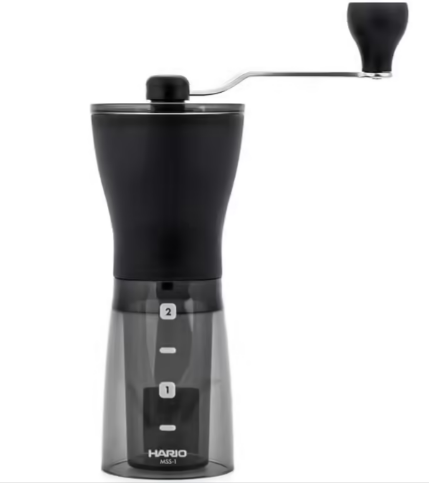
Coffee grinder – Mini Slim Plus – Hario
– Adjustable conical ceramic burrs
– 50g hopper for coffee beans
– Will grind up to 24g in container
2 – Porlex Tall II Hand Coffee Grinder:
A manual grinder from famous Japanese brand Porlex, you can grind up to 40g of coffee beans with this small and compact coffee grinder.
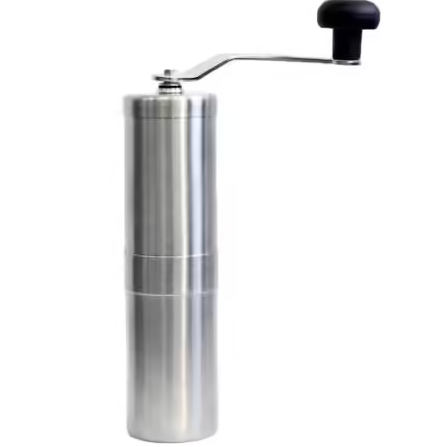
3 – Comandante C40 MK4 Nitro Blade Grinder – American Cherry:
The perfect balance between precision, intelligence, quality and practicality, the Comandante C40 MK4 Nitro Blade Grinder offers a very consistent grind for all brewing methods.
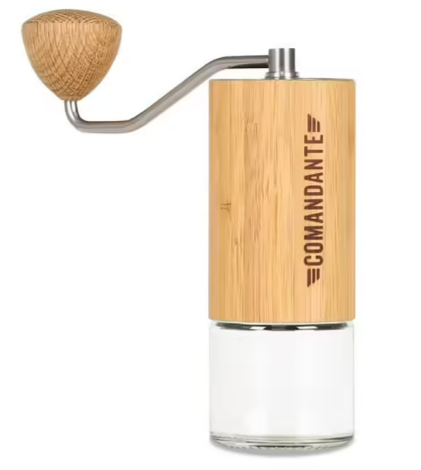
Coffee grinder – C40 MK4 Nitro Blade American Cherry – Commandante
Flawless Precision
Simple adjustments
Very Resistant Conical Burrs
4 – D-Kanta MG05 Coffee Grinder Black + Free Coffee:
This coffee grinder with a quality aluminium anodised body features a stainless steel conical burr and a beautiful wooden handle. It offers the ideal grind for slow coffee or espresso.
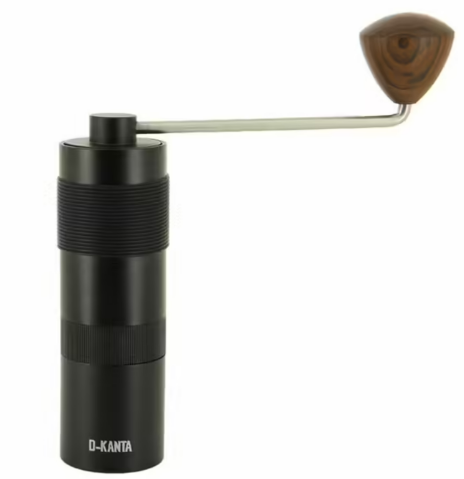
Coffee grinder – MG05 black – D-Kanta
Stainless steel conical grinding wheels
Wheel diameter: 38 mm
Adjustment with 30 notches
5 – Eureka Baby Hand Grinder Ceramic & Olive + FREE Coffee Beans:
This manual grinder from famous Italian brand Eureka suits all grind types and is made of the highest quality materials.
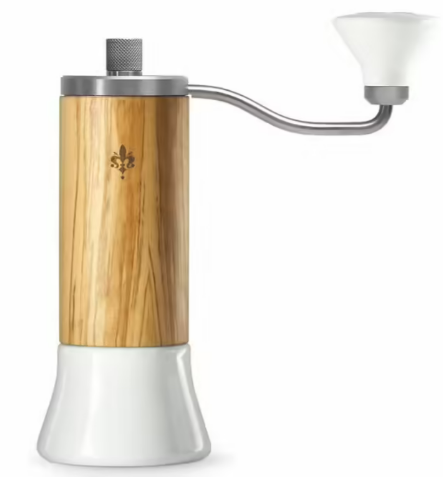
Manual coffee grinder – Baby Hand Grinder Ceramic & Olive – Eureka
Conical burrs in special hardened steel
Micrometric adjustment
Robust and easy to use
You’ll have seen that a coffee grinder is essential to elevating your daily brewing experience. In fact, you’ll wonder how you ever managed without. All that’s left to do is head to our store, select the right one for your needs, and take a step closer to achieving coffee perfection.
Discover all of our articles